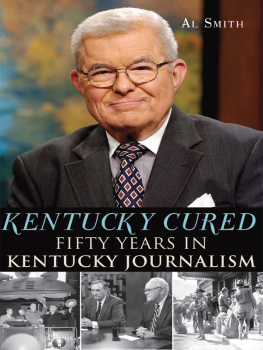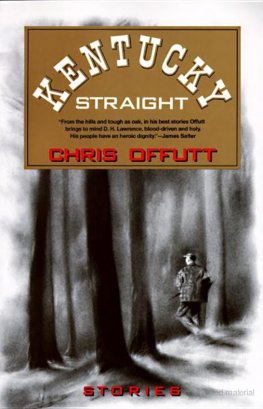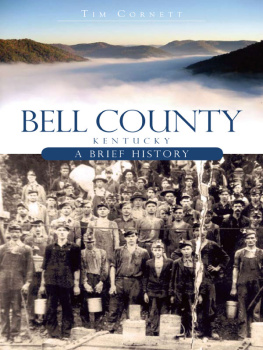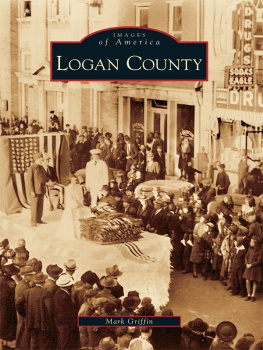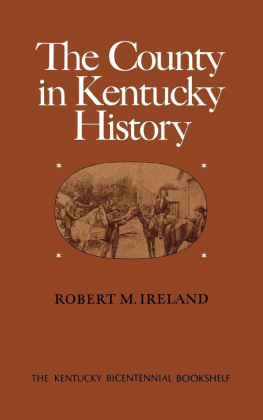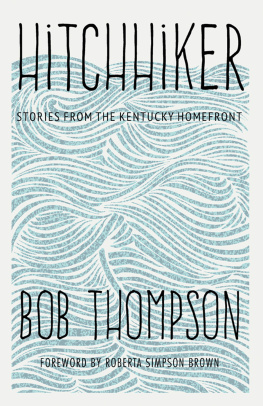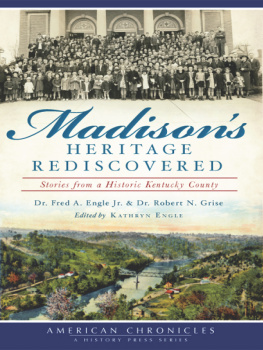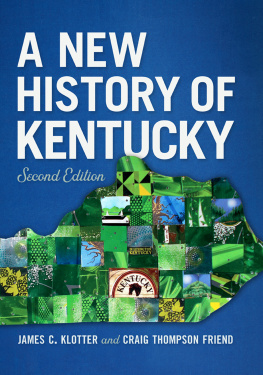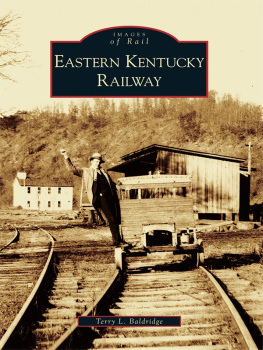

Published by The History Press
Charleston, SC 29403
www.historypress.net
Copyright 2012 by Al Smith
All rights reserved
Cover photos by Steve Shaffer, Kentucky Educational Television
First published 2012
e-book edition 2012
Manufactured in the United States
ISBN 978.1.61423.720.4
Library of Congress CIP data applied for.
print ISBN 978.1.60949.790.3
Notice: The information in this book is true and complete to the best of our knowledge. It is offered without guarantee on the part of the author or The History Press. The author and The History Press disclaim all liability in connection with the use of this book.
All rights reserved. No part of this book may be reproduced or transmitted in any form whatsoever without prior written permission from the publisher except in the case of brief quotations embodied in critical articles and reviews.
For Catherine, Carter and Ginnymy children who
raised me while they were growing upand Martha Helen,
their editor, and mine, for life.
CONTENTS
FOREWORD
To meet Al Smith for the first time is to feel that you have known him forever. And before your meeting is over, Al will likely know as much about you as your family does and as much about your family as you do.
It is this visceral curiosity about everything and everyone that has made Al one of the leading chroniclers of his time, that and his prodigious memory. Even more fortuitously, he is an extraordinarily talented writer and compelling speaker.
I first friended Al in my search for an experienced journalist who would play the key role in the launch of an independent public affairs program on Kentucky Educational Television (KET). It was 1974. KET was five years old and ready to extend its educational mission beyond the school and into the home, to inform adults even as it helped educate children. But to be perceived as credible in interpreting Kentucky affairs of state, the commentators had to be independent, not suspected of bending their views to please the powers that be.
The moderator needed to be skillful at drawing out all sides of an issue. I initiated a search at the 1974 annual convention of the Kentucky Press Association in Covington. When I got there, I sought help in identifying some prospects I might interview. As it turned out, the president-designate was one Al Smith. Even as he suggested others he thought might suit me, I realized that Al was just what I wanted, if I could get him.
Al was intrigued by the proposition, but he lived in Russellville where he was owner/publisher of the Russellville newspaper and several others in the region. Russellville is a more than three-hour drive from the KET studios in Lexington!
We discussed. We dickered. I explained that to emphasize the programs independence from KET, he would also have to produce it. He would assume complete control over the programs agenda and the choice of guests.
Al hesitated, and I certainly didnt blame him, over committing to a seven-hour round-trip drive every week. But in the end, he agreed to take it on.
I think he had reservations about just how much editorial rope I would give him, often testing me with a question like, Now, you said I could do what I wanted. This is what I have in mind. Are you OK with it? I wont say I agreed wholeheartedly every time, and early on I might have offered a suggestion or two. But when he almost never paid any attention to my suggestions, I decided he was more than worth occasional heartburn.
The essence of Al Smith is that he was born to be a public figure, in print and in person. And in one way or another, he always has been. Through his weekly exposure statewide on Comment he made friends as well as fans throughout Kentuckyand beyond.
Al stuck with Comment on Kentucky for thirty-three years with only one major absence. After five years, he took leave from KET for three years, when President Carter appointed him to be Federal Co-Chair of the Appalachian Regional Commission in Washington, D.C. Carters reelection attempt failed, so Al served only the first year under Carter then two years under President Reagan, which certainly established his nonpartisan credentials.
After Al retired in late 2007, he decided the time had come for him to report his own story. He wrote a well-accepted book, Wordsmith, My Life in Journalism, published in 2011. It describes a career in journalism, and a life, that are as unique as they are universal.
He barely recovered from writers cramps when he went to work on the present book featuring highlights of his many years of columns, editorials, sketches, profiles and history of our times.
A feature of Comment on Kentucky over most of its long run was the mini-essay with which Al ended each segment. If the half hour program was like a newspaper, the go-out, as he called it, was the editorial. It became a cherished and oft-quoted element of the series. Even as this book you are about to read and enjoy preserves much of Als many-faceted writings, he should really do at least one more that collects a selection of his unforgettable go-outs.
There never has been enough of Al Smith to go around, to meet all the requests for his appearances, his reviews, his profiles and his companyespecially for his company. That is why these books he is writing in later life, capturing as they do the core of his thinking and being, will always be treasured by those who know him now and no less by those who will know him only through these publications.
O. Leonard Press
Founding Director of KET
PREFACE
Cured in rural Kentucky refers to the seasoned condition of harvested tobacco ripe for market or an aged ham taken from the smokehouse and ready for slicing. Of course, when the doctor says we have recovered from a disease, we cross our fingers and hope we are cured.
In our signature whiskey business, good bourbon is labeled for sale by the number of years spent curing in charcoal barrels. Of someone who cant drink in moderation, cured used to be the cautious description for an alcoholic who seems to have quit. In Alcoholics Anonymous, however, there is no cure, only abstinence achieved by staying sober one day at a time, accepting as fact there is no successful moderate or controlled drinking for the alcoholic. The process is called in recovery, and it has worked for me for nearly fifty years in which I have stayed sober but never claimed to be cured.
I lost control in a ruinous decade of increased drinking while I learned the journalism trade, with some early success, in New Orleans. I learned about recovery and AAs twelve-step program on a little newspaper in rural Kentucky where I got back my self-respect and rebuilt my career.
Kentucky Cured is not a book of sermons about drinking, but it was written by a journalist who found recovery and a new life away from the big city and among farm people, who value the term cured, as in seasoned, ripe and ready. Yes, and soberalthough one cynical reader told me the editorials I wrote were a hell of a lot more interesting when you were a drunk.
The stories and commentaries you find here reflect whatever maturity and insight I earned from adventures in Kentucky journalism that took me back to the cities, even to working in Washington for two presidents of rival political parties. I came to Kentucky penniless and despondent, humiliated over my losses in Louisiana and the disappointments for my family back in Tennessee. In Kentucky, everything I once valued but lost was returned, and that which I desired was either achieved or I learned I didnt need it, in season, in its own proper time, when my perspective, at least, was cured.
Next page
